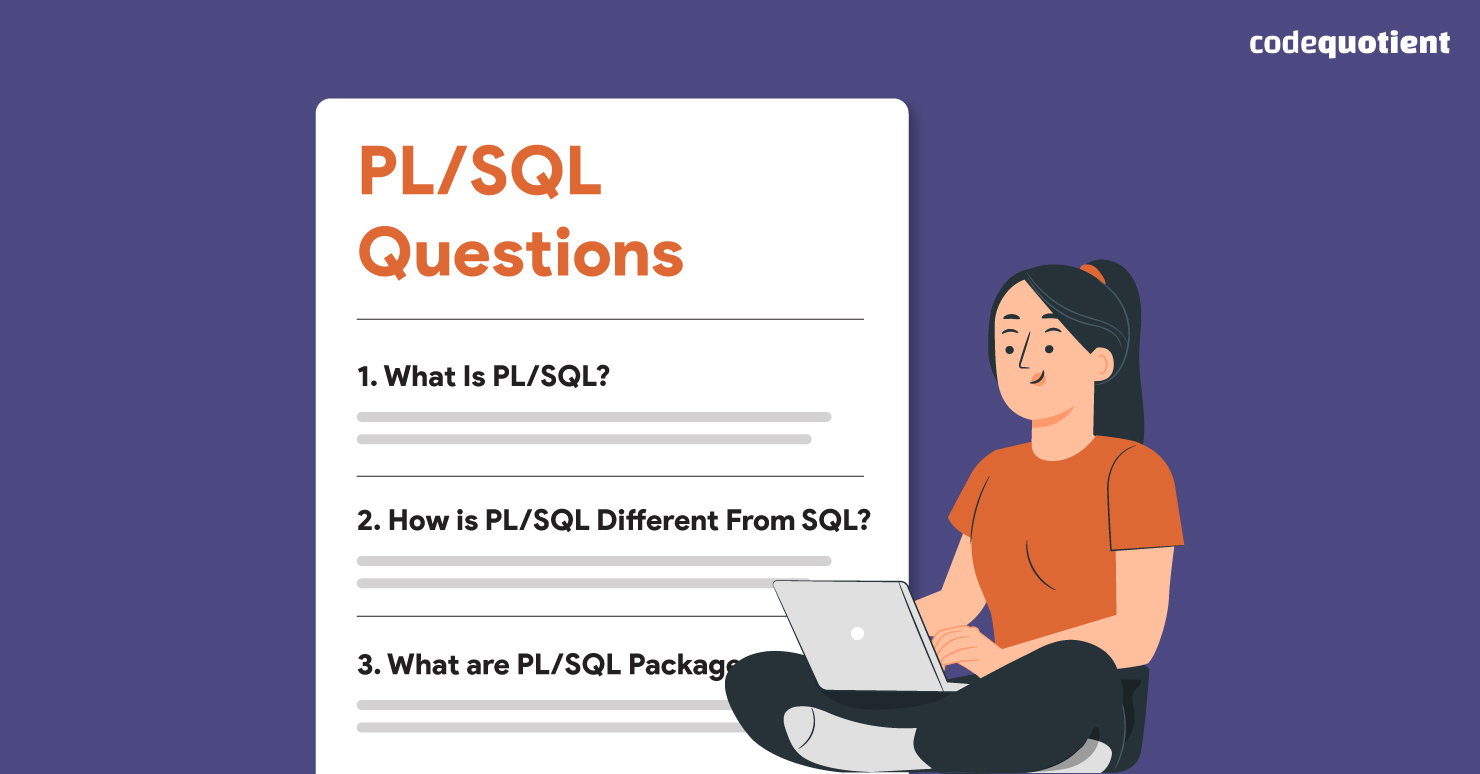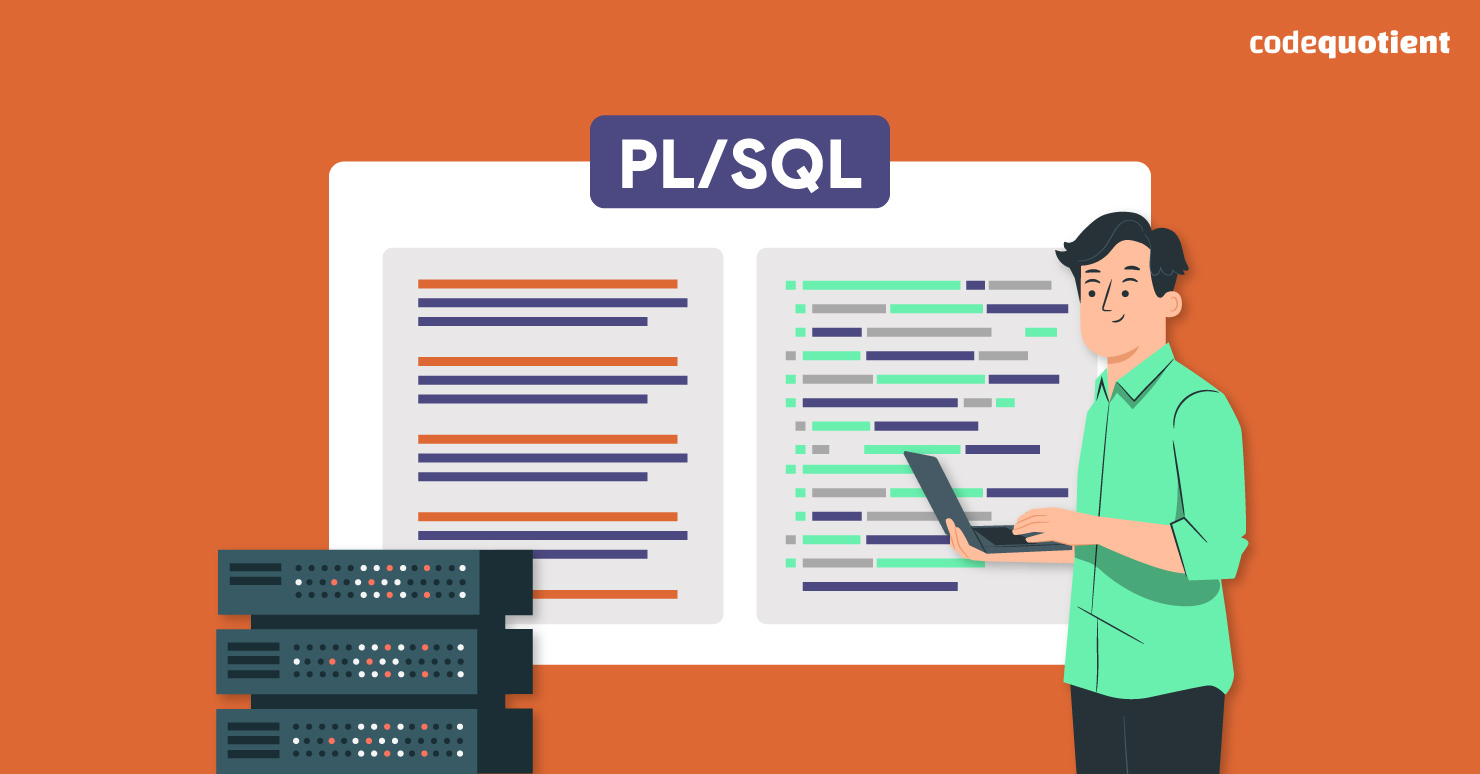If you want to become a Data Scientist, you will need to work with databases, and the most popular database in the world is the Oracle database. Interacting with any database requires knowledge of its programming language. While most SQL programming languages for databases like MS-SQL and NoSQL are non-procedural and come with a limited feature set, that is not the case with PL/SQL-the Oracle Corporation’s procedural extension for SQL and the Oracle relational database.
Knowing the basics of Oracle PL/SQL is significant for anyone working with complex, massive, and distributed datasets.e Here are the ten most relevant Oracle PL/SQL questions you should know if you wish to work as a data scientist:
10 Essential Oracle PL/SQL Interview Questions Data Scientists Must Know

1. What Is PL/SQL?
The procedural extension of Oracle DB is called PL/SQL (Procedural Language/SQL). It allows control structures, procedures, functions, modules, etc., and enables the user to create sophisticated database applications.
2. How is PL/SQL Different From SQL?
SQL is a database programming language with no procedural capabilities, whereas PL/SQL has procedural capabilities and supports high-level features such as conditional statements, looping statements, etc.
SQL statements are executed one at a time and are slower to carry out. In contrast, PL/SQL sends statements as a complete block to the server, resulting in much faster execution.
Lastly, there are no error-handling mechanisms in SQL, but PL/SQL supports customised error handling.
3. What are PL/SQL Packages?
Packages in PL/SQL are schema objects that contain variables, cursors, stored procedures, and functions in one location. All packages must include the Package Specifications and Package Body.
4. What Are PL/SQL Cursors?
To obtain and process many rows, PL/SQL needs a particular resource called a cursor. A cursor points to a specific region in the memory, which houses SQL statements and the data required to process them.
A PL/SQL cursor is a mechanism that allows the selection of many rows of data from a database and the sequential processing of each row separately inside a program.
5. What are PL/SQL Stored Procedures and Triggers? How do They Differ?
A stored procedure is a predefined command that instructs a database to conduct an action when a specific event occurs. It is also known as a trigger.
Triggers can be used for the following purposes:
- To uphold integrity limitations which may be complex.
- To maintain a log of any database transactions.
- To audit table information by customised sorting and filtering.
- To trigger third-party programs based on any database table changes.
- To enforce strict transaction guidelines and prevent invalid ones.
6. What are PL/SQL Blocks, and How Many Different Types are There?
In PL/SQL, statements are organised into groups called Blocks. Constants, variables, SQL statements, loops, conditional statements, and exception handling are all examples of PL/SQL blocks. Additionally, blocks can be used to create a function, a method, or a package.
PL/SQL blocks are mainly of two categories:
- Anonymous blocks: These are blocks without a header and don’t make up a function, process, or trigger’s body.
- Named blocks: These are PL/SQL blocks with headers or labels. Triggers or subprograms (procedures, functions, packages) can be named blocks.
7. What is The Difference Between Syntax and Runtime Errors?
The errors that a PL/SQL compiler can quickly identify are syntax mistakes. These mistakes might include things like misspellings.
Runtime errors are PL/SQL block errors that need the inclusion of an exception-handling section for smooth functioning. These mistakes include SELECT INTO statements that return no records. If you would like to learn more about the difference a compiler and interpreter can have on the detection of runtime errors, click here!
8. Describe Exception Handling in PL/SQL?
Exception Handling is an error-handling mechanism in the software to manage undesirable scenarios when PL/SQL scripts suddenly stop. All exception-handling code in PL/SQL is included within an EXCEPTION section.
9. Name Three PL/SQL Exceptions?
- Predefined Exceptions: These are common mistakes with specified names such as NO_DATA_FOUND, INVALID_CURSOR, etc.
- Undefined Exceptions: Less recurring exceptions without any given names
- User-defined Exceptions: Customised exceptions which violate business rules but do not result in runtime errors.
10. What are PL/SQL Records?
A PL/SQL record may be thought of as a series of different bits of information, each of which is of a simpler type and can be associated with one another as fields or as a collection of values. PL/SQL supports table-based, programmer-based, and cursor-based records.
Conclusion
While PL/SQL is a vast procedural database language with multiple applications, we hope these questions help you understand it enough to pursue your desired role.
CodeQuotient offers you the opportunity to build your career with its SuperCoders Program. This three-month online, full-stack development course focuses on project-based learning to help you become a knowledgeable and skilled programmer. You can learn programming and earn an Industry-integrated bachelor’s degree. Read testimonials of a successful learner here and apply for the BCA program here.




